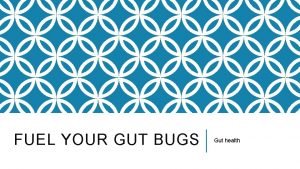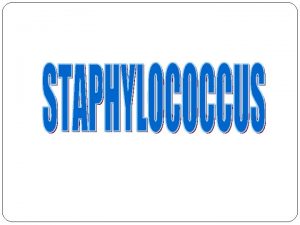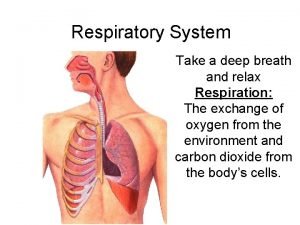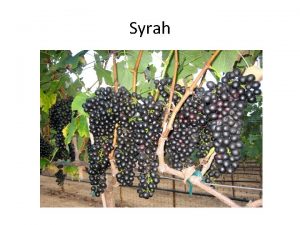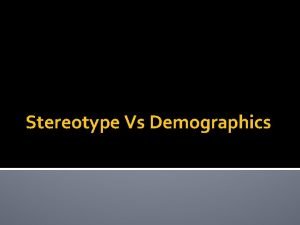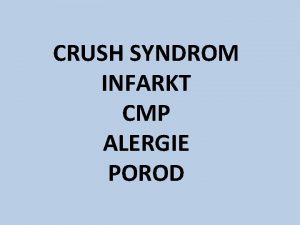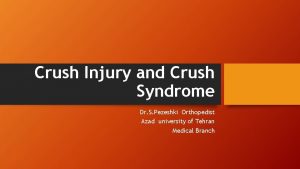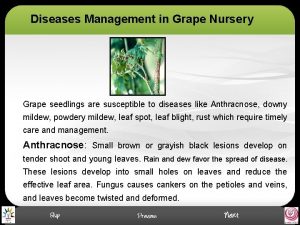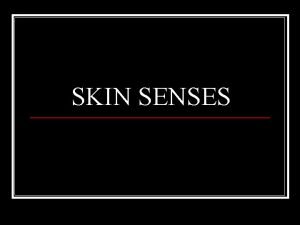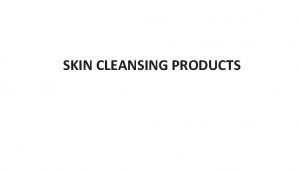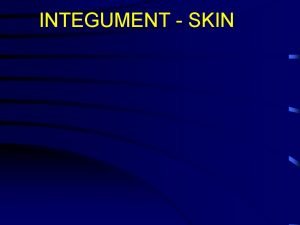CRUSH 26092018 Grape skin polyphenol responses to high













- Slides: 13

CRUSH 26/09/2018 Grape skin polyphenol responses to high and extreme high temperatures GOUOT Julia 1, 2, SMITH Jason 3, HOLZAPFEL Bruno 1, 4 & BARRIL Celia 1, 2 1 National Wine and Grape Industry Centre, Charles Sturt University, Mambarra Drive, Wagga, NSW 2678, Australia 2 School of Agricultural and Wine Sciences, Charles Sturt University, Wagga, NSW, 2678, Australia 3 Department of General and Organic Viticulture, Hochschule Geisenheim Germany 4 New South Wales Department of Primary Industries, Wagga, NSW, 2678, Australia www. csu. edu. au/nwgic

Polyphenol biosynthesis www. csu. edu. au/nwgic

Day temperature impact on polyphenols Flavonols Increase www. csu. edu. au/nwgic Anthocyanins Decrease Flavan-3 -ols Tannins No or variable effect Not tested

Heat events HEAT WAVE = min of 3 consecutive days with T °C > threshold Adapted from Intergovernmental Panel on Climate Change (IPCC), 2007 Project AIM Critical temperature intensity? Critical minimum duration of exposure? www. csu. edu. au/nwgic

Experiment set-up SHIRAZ www. csu. edu. au/nwgic Nrep = 4 vines Nbunch/vine = 10 Nberry/bunch = 30 Adapted from Tarara et al, 2000

Experimental design Doehlert (2 factors 3 & 5 levels) Intensity & Duration www. csu. edu. au/nwgic 39 hours = 3 days Véraison Coded variables Real variables Treatment Duration ΔT° Duration (h) Avg T° (°C) LT/12 h -0. 5 -0. 866 12 30 LT/30 h +0. 5 -0. 866 30 30 HT/3 h -1 0 3 37 HT/21 h 0 0 21 37 HT/39 h +1 0 39 37 VHT/12 h -0. 5 0. 866 12 44 VHT/30 h +0. 5 0. 866 30 44

Temperature recording Treatment LT T°max VPDmax 35. 3 °C 4. 3 k. Pa ΔT° 30 h - 0. 7 °C 3 h HT - 0. 7 °C VHT www. csu. edu. au/nwgic + 8 °C + 16. 7 °C + 16. 7°C 45. 9 °C 53 °C 3*13 h=39 h 8. 9 k. Pa 13 k. Pa

Sample preparation Sample processing SAMPLING PEELING GRINDING FREEZE DRYING Skin secondary metabolites A) Tannins (phloroglucinolysis) B) Polyphenols EXTRACTION LC-QQQ Specific & sensitive method Pinasseau et al, 2016, 2017 www. csu. edu. au/nwgic

Berry ripening SD 1 SD 0 SD 1 HW www. csu. edu. au/nwgic SD 2

Skin polyphenols - dynamic www. csu. edu. au/nwgic

Skin polyphenols – composition @ harvest www. csu. edu. au/nwgic

Conclusion LT ΔT° = - 0. 7 °C T°max = 35. 3 °C HT ΔT° = + 8 °C T°max = 45. 9 °C No parameters affected VHT ΔT° = + 16. 7 °C T°max = 53 °C No berry survival Polyphenol concentration Speed of desiccation Speed of compositional changes Final results = Same % di. OH forms FA & FO % coumaroylated AN forms % ECGfree Winemaking compromised Loss of extractable polyphenols www. csu. edu. au/nwgic Shut down of biosynthesis Enzymatic & chemical degradation Some forms more stable than others Threshold around 50 -53 °C

jgouot@csu. edu. au Thank you Acknowledgements Dr Bruno Holzapfel Dr Celia Barril Dr Jason Smith Staffs from NWGIC & Na. LSH Organising committee www. csu. edu. au/nwgic
